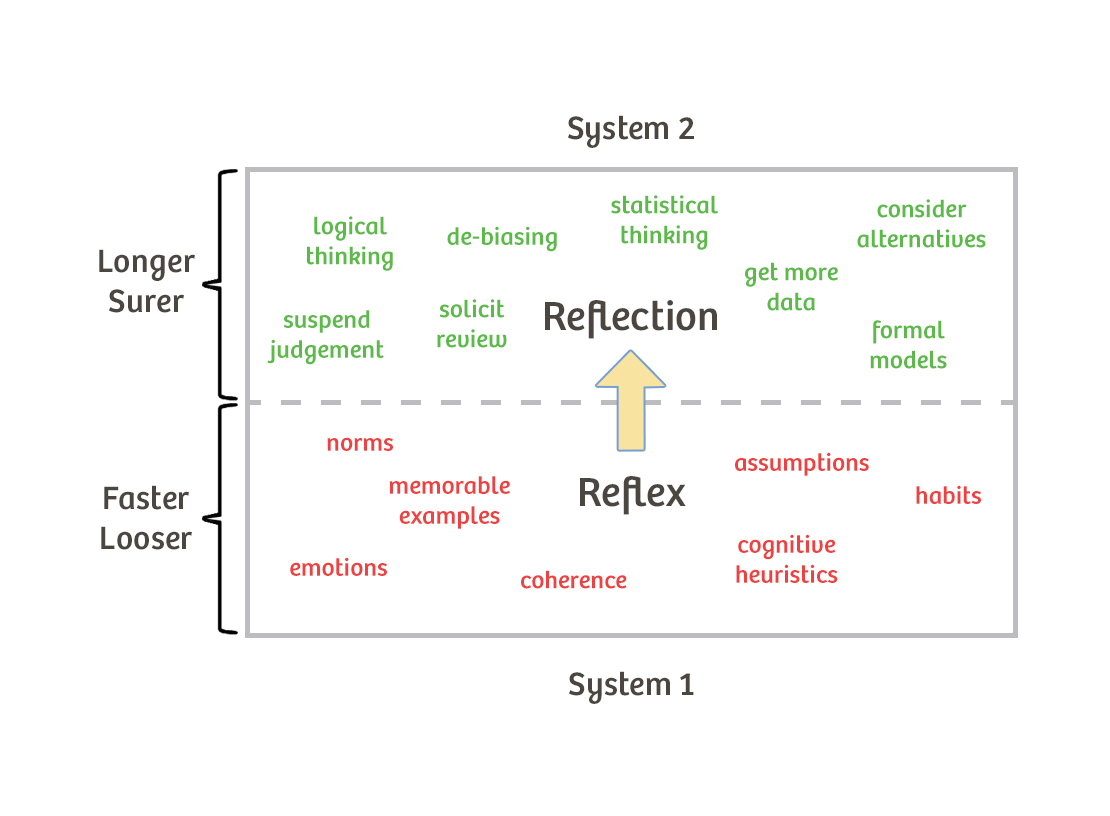


On the basis of these past visual stereotypes, System 1 delivers the wrong perceptual experience. In the Müller-Lyer Illusion, System 1 scans our visual stereotypes about the way lines and angles are associated in our vast past experience of visual fields. Applying Thinking Fast and Slow to Müller-Lyer Illusion Here are some typical System 2 activities in order of ascending complexity: bracing for a starter pistol in a race, scanning a large crowd to locate a woman with a blue hat, sifting through one’s memory to match the song on the radio to its proper name, self-monitoring one’s social behavior at an office party to make sure no lines of propriety are crossed, parallel parking on a crowded city block, comparing the pros and cons of an expensive purchase, and assessing the cogency of inferential relations in a complex argument.Įach of these scenarios requires the agent to focus intention and effort this enables the agent to pay attention to the mental operation in order to maximize chances of a beneficial outcome. “The Müller-Lyer Illusion capitalizes on typical visual stereotypes to intentionally bias our perceptual mechanisms and deliver a very fast, intuitive, natural-feeling- but totally incorrect-judgment.” These activities are slower and more methodical than System 1 operations because they require uninterrupted effort that is easily disrupted by distraction. System 2 operations are diverse but unified by one feature: the activities are attention-intensive and thus are typically associated with voluntary activity. The important point is that these characteristic activities of System 1 are involuntary, automatic, and very fast in their delivery of information to the agent. These actions also exemplify the distinctive cultural knowledge acquired through experience, practice, and stability of past association for memory retrieval. These are only examples, but they showcase an evolutionary range of innate cognitive reflexes that we share with other species. The kinds of automatic actions attributed to System 1 include detection of the distance of objects in a visual field, spontaneous bodily orientation toward a loud noise, threat detection, and spontaneous memory retrieval behaviors (e.g., completing the phrase “2 + 2 = ?” or “The capital of the USA is…”).

System 1 is almost always on auto-pilot, accompanied neither by sensations of agency nor by effort. Daniel Kahneman has raised this theory of mind to the level of common knowledge. Psychologists Keith Stanovich and Richard West have named these System 1 and System 2. 1 There are two distinct cognitive systems delivering judgments to the agent. One helpful way to understand what is occurring in this perceptual experience is to think of cognition as always involving a dual process.


 0 kommentar(er)
0 kommentar(er)
